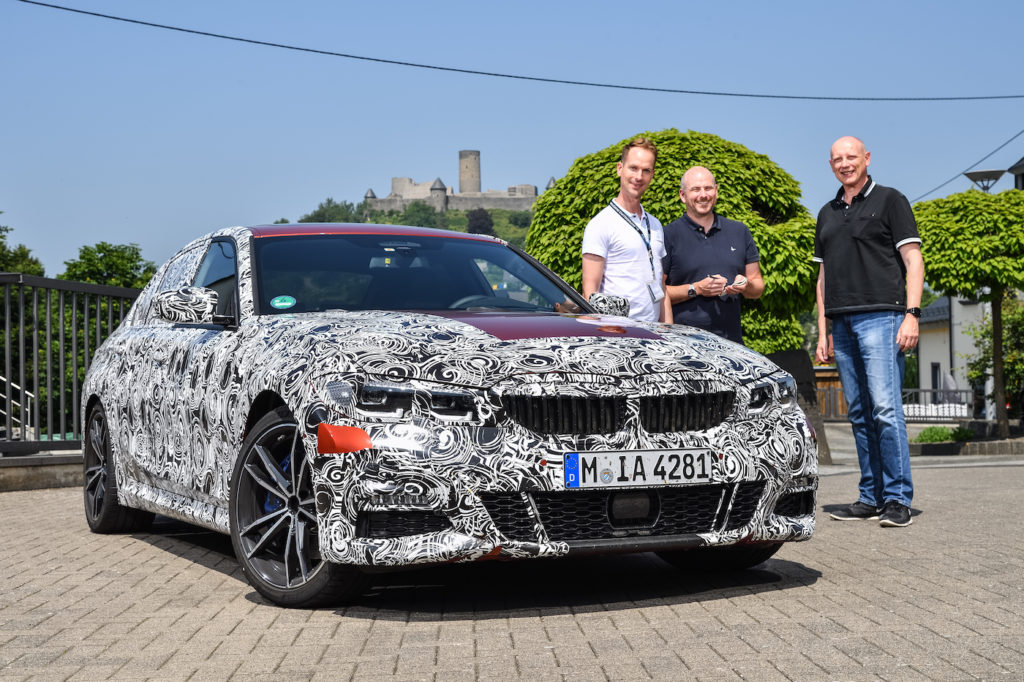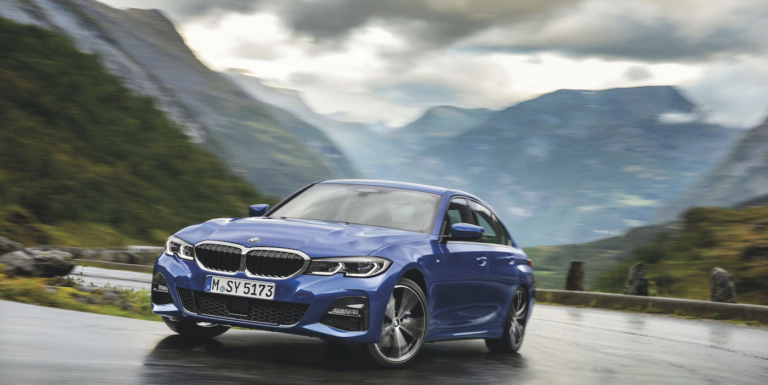“Customers always come up with the question, ‘What car best fits the brand?’ Number one by far is the 3 Series, and the reason is driving pleasure,” says Peter Langen, BMW’s senior vice president of driving dynamics. That makes replacing the 3 Series a huge responsibility, it being core to BMW’s brand identity.
Following its reveal at the Paris Auto Show in October, we joined Langen, together with Jos van As, head of driving dynamics, Robert Rothmiller, functional design and integration driving dynamics, and Mischa Bachmann, integrated application for BMW’s midsize vehicles, as the 3 Series went through some final validation in and around BMW’s test centre at the Nürburgring.
“We’ve done thousands of laps around here,” admits Rothmiller, all in a bid to ensure that the 3 Series lives up to that goal of driving pleasure. We defined from the beginning that we would like to keep the character of the car with new sportiness in the chassis department,” states Langen. He says they started the process about three years prior to developing the car, creating a working group that better integrated the body and chassis department. In doing so they developed methods and simulation tools to better understand the interaction between the body and chassis parts.
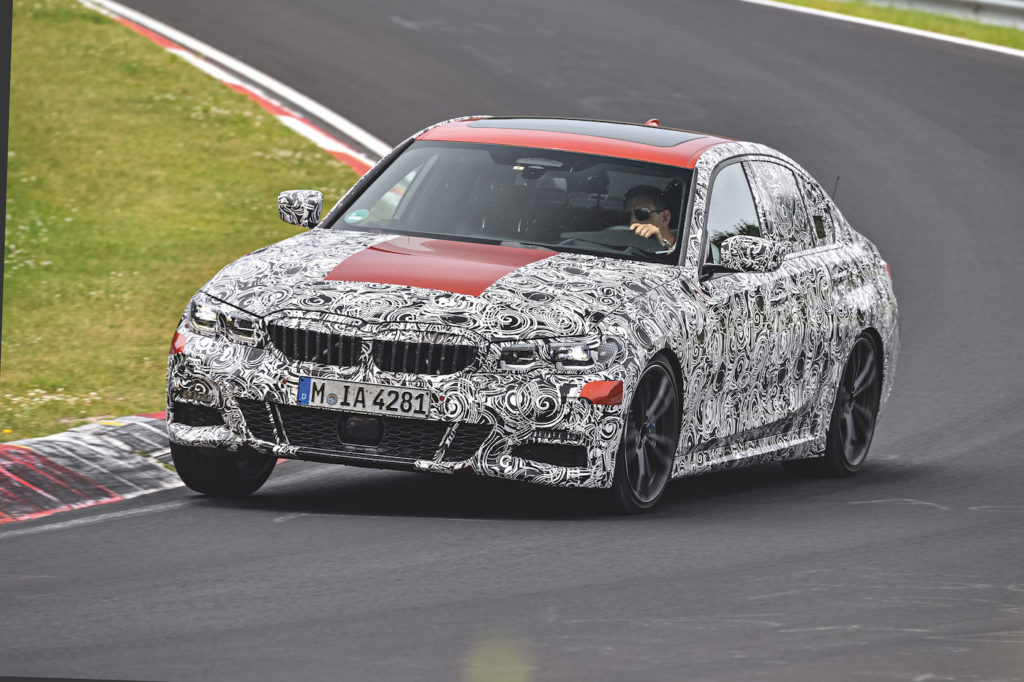
It’s this new approach, according to the team, that has been key in the development of the new 3 Series. The result is greater stiffness of the body, not just overall, but also locally.
Rothmiller explains, “We often talked about a global version of the cars, measured by the jack mounts, which is quite an artificial measurement. The car is on the tires, it’s on the wheels. If you are driving around a corner, it’s not on the jack mount. We have a lot of computing power to understand the whole chain, from the tyres, to the front axle and rear axle carrier, to the driver. The global stiffnesses are 10% to 25% stiffer than the previous model, but the local stiffnesses are more important than the global stiffnesses.”
He points to the top mount and explains that it is almost twice as stiff as the mount on the previous 3 Series; likewise, the front axle carrier is about 50% stiffer than its predecessor.
What that means, according to Rothmiller, is that, “we can play a little bit more with the balance of the bushing stiffness and the structural stiffness, enabling these to create more precise agility for the car, with the same comfort, or even better”.
This adjustability has been enabled by having greater computational power, which allows for more virtual development, and is useful in the extrapolation of technology used in other models that will share some of the 3 Series architecture.
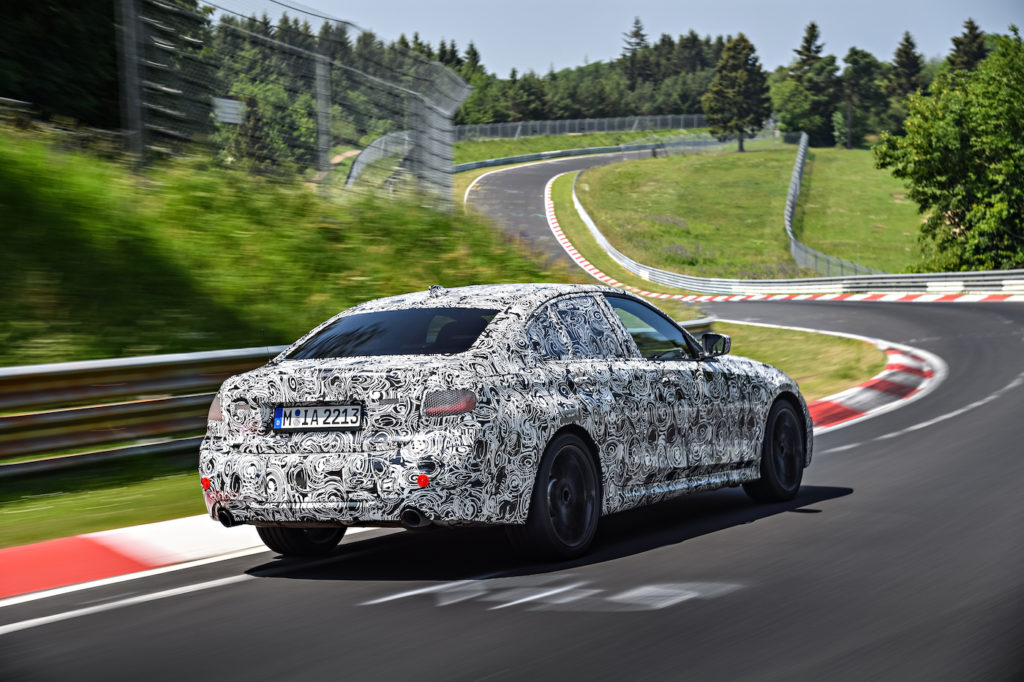
A key change over the outgoing car is the inclusion of new hydraulically stopped dampers as standard across the entire model line-up – with electronically controlled adaptive dampers being optional. That choice is significant, not least because it is relatively expensive compared with a conventional damper.
However, Langen fought for this feature for a reason: “With this new damping system, we have the feeling that we can really give a specific answer underlining the sporty driving, and we don’t lose much comfort.”
That explains all those Nürburgring laps, as well as driving on the surrounding roads. As Rothmiller says, depending on the kind of applications the team is doing, the final tuning of dampers takes place at the ‘Ring, although as the project nears its completion, work focuses on steering.
The spring rates are between 10% and 15% greater than the outgoing car, which Rothmiller says is significant. “It’s the same step as from basic to sports suspension,” he says.
The benefits of the new dampers are clear, with the additional piston and cone offering greater control, particularly at the end of the upper travel of the damper’s stroke, where the additional damping from the hydraulic compression becomes significant.
“Because of this, we have this system that is stroke dependent, not frequency-dependent,” he explains. “Frequency means if you are smoothly on your way, you do not have so much damping force, and as soon as the car gets to the edge of the frequency [the ride] suddenly gets hard. That’s not the point for a BMW 3 series. We do not want any kind of unexpected reactions from the car. It has to be smooth and effortless,” says Rothmiller.
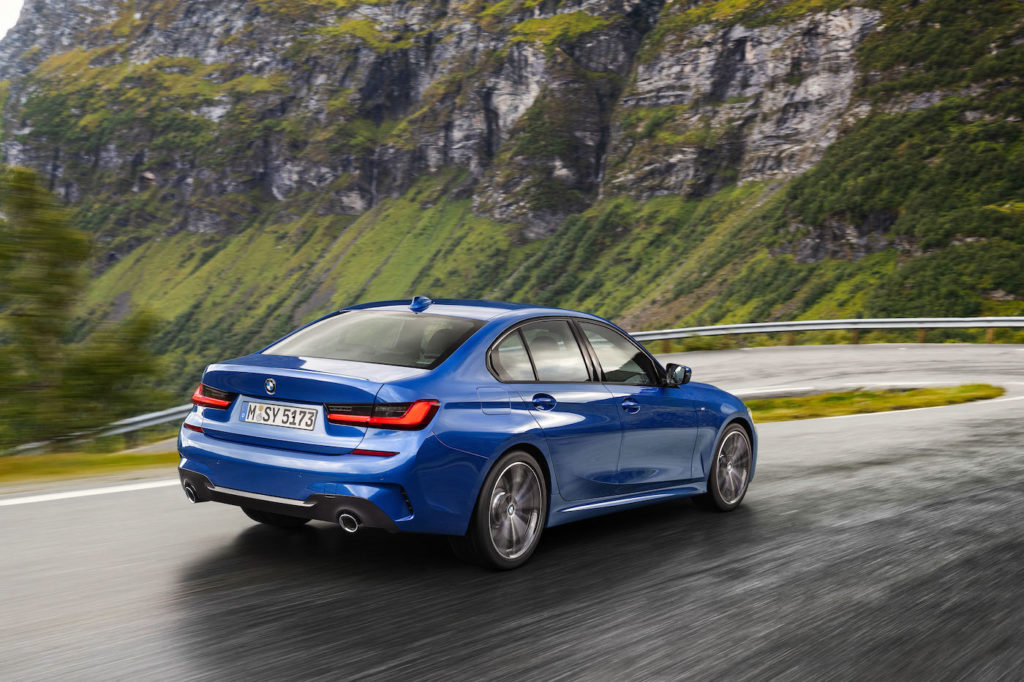
Helping control that is a 30mm increase in track width over the old car, a 10mm lower centre of gravity, and a mass that is not just lower, but around 55kg (121 lb) lighter than the previous 3 Series, despite the addition of the latest, heavier, emissions regulation exhaust filters.
“We make intelligent usage of materials,” says Rothmiller, adding, “We’re not only using steel but also alloy, mainly at the front, to get the weight down at the front, and to make the car more agile and enjoyable at the steering wheel.”
With the new 3 Series, there has been a push to minimize the potential for optional features to create conflict within the chassis. There’s the standard suspension, sports suspension and fully adaptive suspension, the base car coming with steering specifically tuned to that model, the sports suspension cars only coming with the variable-rate sports steering. Likewise, the optional limited-slip differential is only available with the sports suspension.
As Rothmiller explains, “We make the right packages for customers. If you do want a limited-slip differential, you need the sports suspension.”
The benefits of the dynamics team’s work should be obvious to customers from the second they drive the car. Job done then, as the car reaches production. Not so, says the dynamics team: the new car may be finalized, but they are already working on improvements and revisions for later models. The engineering paradox of never being satisfied, or finished, is never more obvious than in the car industry. However, after a few hours behind the wheel, the team should be satisfied that the 3 Series has the dynamic prowess to maintain its long-held position at the top of its class.
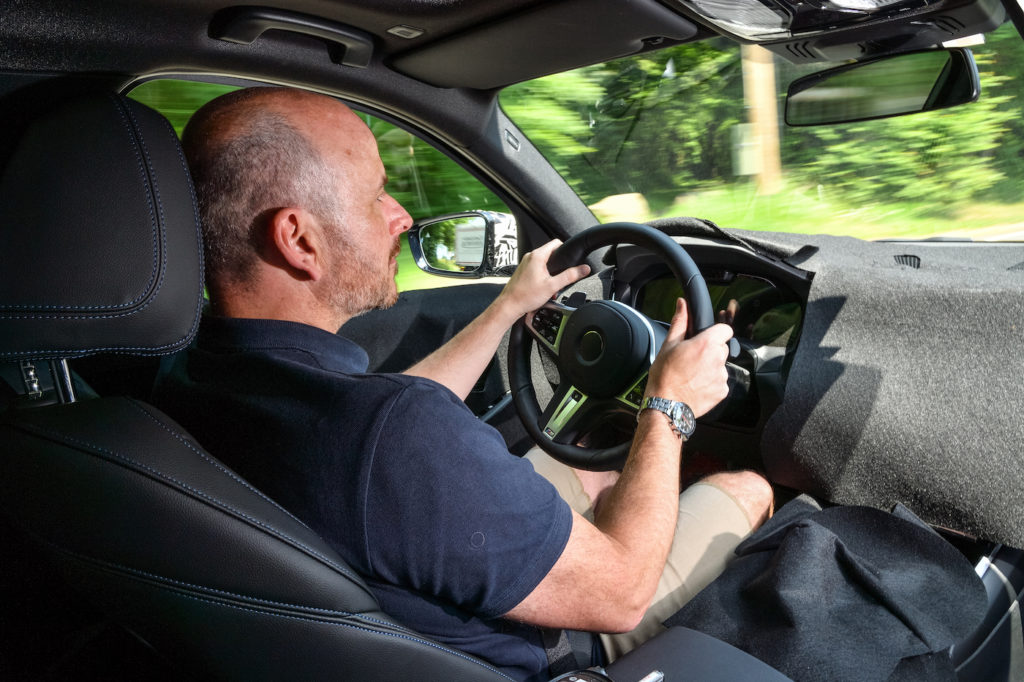
Driving impressions
More than merely a passenger ride and a chat with the engineers, the BMW team let me drive the new 3 Series preproduction cars. There’s no denying that in recent years its rivals have run it closer than is comfortable for a car that has long been heralded as the dynamic benchmark in its class. With the new car, sampled here in 330i guise on the sports suspension, with limited-slip differential and M Sport brakes – the engineers’ preferred choice – it’s taking no chances in reasserting its position at the top of the class dynamically.
What’s deeply impressive is the fine body and wheel control, the 3 Series exhibiting real finesse even at high speed on the tough conditions that any chassis engineer will know on the Nürburgring.
Away from the track there’s a supple civility to the ride that demonstrates the sophistication of the damping, a comfort that does not come at the expense of that intangible feeling of connectedness, the thing us road-tester journalists bang on about relentlessly. We’ll see how it really stacks up when we sample a wider range of full production models, alongside their direct rivals, but on this evidence, the 3 Series is going to be tough to beat.
